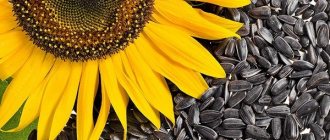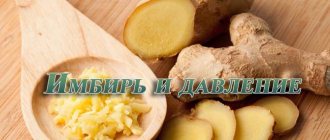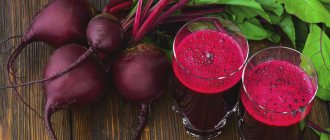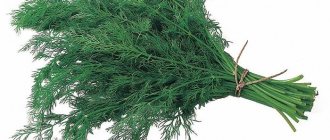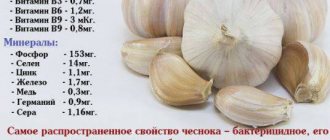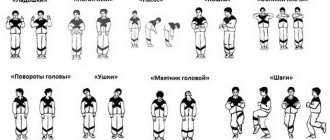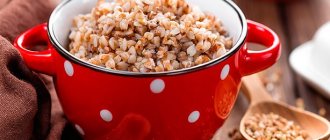Composition and beneficial properties
Vitamins and minerals in pumpkin dilate blood vessels and lower blood pressure
Pumpkin is an invaluable product for human life. It contains many vitamins, energy substances and microelements. Pumpkin seeds are no less healthy; they contain essential oils, fatty acids, resinous substances, large amounts of proteins, etc. Let's take a closer look at the composition of the pulp:
| Vitamins | Minerals | Other useful things | The nutritional value |
| A | Calcium | Starch | Calories 22 kcal |
| Group B | Magnesium | Disaccharides | Fats 0.1 g |
| C | Phosphorus | Glucose | Proteins 1 g |
| E | Iodine | Fructose | Carbohydrates 4.4 g |
| RR | Iron | Sucrose | Dietary fiber 2 g |
The areas of application of pumpkin and pumpkin seeds are cosmetology, cooking, dietetics, and traditional medicine. The seeds are known as an effective anthelmintic drug. They quickly rid the body of parasites and, unlike some pharmaceutical drugs, are not toxic.
The pulp is often used to treat diabetes, kidney and gallstones, swelling, anemia, cardiovascular diseases and many other ailments. The benefits of pumpkin are endless, they:
- Increases the body's protective functions;
- Eliminates constipation, vomiting, insomnia;
- Calms the nervous system;
- Eliminates excess weight;
- Normalizes almost all metabolic processes in the body;
- Lowers the level of cholesterol in the blood;
- Has a diuretic, choleretic and antipyretic effect;
- Relieves swelling;
- Prevents vision impairment;
- Improves digestion and the functioning of the gastrointestinal tract in general;
- Normalizes blood clotting.
Pumpkin seeds and oil
For hypertension, you can use both pumpkin seeds and their oil, as they help stabilize blood pressure.
Seeds
They contain vitamins B, K, C and E, as well as many minerals - 100 g of seeds contain 80% of the daily value of iron and manganese, 50% of the daily value of potassium, copper and zinc. In addition, the composition contains sodium, calcium and selenium. Thanks to this, the seeds contribute to:
- strengthening the immune system;
- improvement of mental activity;
- activation of the gastrointestinal tract;
- beneficial effects on the musculoskeletal and reproductive systems;
- increasing visual acuity.
To get all the benefits, hypertensive patients can consume up to 100 g of raw seeds. This is also enough to stop pressure surges. It is important to note here that the seeds cannot be fried, since after heat treatment they lose all their positive effects.
The seeds contain various acids, so they can damage tooth enamel. So, people who have dental problems should avoid them.
Oil
Pumpkin seed oil, which can be purchased at the pharmacy, is also useful for blood pressure. It contains all the vitamins and microelements that are found in the seeds, but does not cause slagging in the body. You can take 1 tbsp of oil. l. on an empty stomach after waking up or prepare the following remedy:
- Moisten 50 dried apricots and place on a paper towel to dry.
- Transfer the dried apricots to a bowl or jar and pour in 200 g of oil.
- Infuse the product for 7 days with the lid closed.
You can take the mixture 1 tbsp. l. on an empty stomach or use as a salad dressing. It will help not only normalize blood pressure, but also strengthen vascular walls, avoid arrhythmia and the formation of blood clots.
The calorie content of 100 g of seeds (100 ml of oil) is about 550 kcal, so they are unacceptable for overweight hypertensive patients, because to normalize blood pressure, first of all, they need to lose weight (it has been proven that every extra kilogram is plus 1 mm Hg) .
How does it affect blood pressure?
To determine whether pumpkin lowers or increases blood pressure, consider the mechanism of its effect on the body.
The pulp and pumpkin juice contain vitamins and minerals that have a beneficial effect on the functioning of the heart, reduce the level of cholesterol in the blood, and also strengthen the walls of blood vessels. The most valuable components are Omega-3 and vitamin E. They prevent the formation of cholesterol plaques in blood vessels and eliminate existing ones. In addition, pumpkin is a powerful antioxidant; it cleanses the body of waste and toxins, which often cause cardiovascular diseases. All these processes help to dilate blood vessels, cleanse them, and subsequently lower blood pressure.
Cautions
Despite all the benefits of pumpkin, diabetics should use it with caution, as it contains a lot of sugar and carbohydrates. In addition, it is contraindicated if there is an ulcerative lesion of the stomach and duodenum. The fruit is prohibited in its raw form in the presence of intestinal colic and low stomach acidity. Of course, pumpkin is absolutely contraindicated in case of individual intolerance.
The indications for which pumpkin should not be consumed do not include pregnancy. On the contrary, it is useful for a woman in this position to eat vegetables, since they contain vitamins and minerals that are necessary for the normal functioning of the body. In some cases, it will even help cope with nausea and severe toxicosis.
If there are no contraindications, pumpkin can be safely used to normalize high blood pressure, but you should not overuse it, especially in the presence of chronic diseases that require competent basic treatment.
So, pumpkin can be used for hypertension, as it helps to smoothly lower blood pressure, remove “bad” cholesterol and prevent a hypertensive crisis. Pumpkin can be eaten raw or used to prepare medicinal porridges and drinks. If you are not overweight or have dental problems, you can also treat yourself with pumpkin seeds and oil.
Recipes for blood pressure
Healing compounds can be made not only from the pulp, but also from the stems. To enhance the effect, you can add honey, lemon, raisins and other ingredients. The recipes are created by traditional healers and, according to numerous reviews from hypertensive patients, are quite effective.
- Porridge with lemon and honey. Pass 0.5 kg of raw pumpkin pulp and one ripe lemon (with zest) through a meat grinder. Then add 5 tablespoons of natural honey to the resulting mixture, mix the ingredients thoroughly, place the composition in a container with a lid and put it in the refrigerator for further storage. The medicine is taken 3 times a day, one tablespoon. During stable high blood pressure, you can increase the rate to 4-5 tablespoons. Take strictly before meals. The recommended course of therapy is three weeks.
- Healing decoction of stems. The decoction is prepared immediately before use. Pour 250 ml of water into a saucepan, add 2 tablespoons of dry, chopped stems and boil the mixture for five minutes. After the specified time has passed, remove the broth from the heat, cool slightly, then filter through a gauze cloth folded in half. The medicinal composition for high blood pressure is consumed during the day, two to three tablespoons after meals. The recommended course of therapy is 2-3 weeks, repeated if necessary after a five-day break.
- Fresh juice. It is considered the most effective remedy for hypertension. To prepare it, you need to peel the pumpkin and pass the pulp through a juicer. If there are no problems with digestion, then you can consume it in its pure form. If there are any disruptions in the gastrointestinal tract (even minor ones), then it is better to dilute the resulting juice with drinking water. Proportions - 100 ml of juice per 100 ml of water. Drink the drink 2 times a day, 100-150 ml before meals. The course of therapy is 2-3 weeks.
- Fresh pulp with raisins. You need to start the course of therapy with fresh pulp with small portions, gradually increasing their quantity. For the first time, 20 grams of pulp and half a teaspoon of washed raisins are enough. Grind the ingredients in a blender and consume the mixture before meals. The dose is increased by 20 grams daily. In this case, the amount of raisins increases by 0.5 teaspoon for every 20 grams of pumpkin pulp. The course of therapy is 1-1.5 months. You can add a little natural honey to the mixture.
- Baked pumpkin. This recipe is well suited for hypertensive patients with increased acidity of gastric juice. Peel the pumpkin, cut into cubes (about 5 by 5 cm) and place in a baking dish. Next, you need to put the pumpkin in a preheated oven for 15 minutes, you can season it with 1 teaspoon of olive oil. It is recommended to eat baked pumpkin for high blood pressure daily, 100 grams at a time - 3 times a day, but you can add oil only once.
Pumpkin pulp has a beneficial effect on the cardiovascular system of the body
Pumpkin juice for blood pressure disorders
For blood pressure disorders, it is recommended to use pumpkin seed oil or eat them raw as a natural regulator.
We suggest you read: How does ginger affect a person’s blood pressure?
Since pumpkin contains a lot of salt, copper, iron and phosphorus, which have a beneficial effect on hematopoietic processes, its consumption is recommended for preventive purposes for heart disease, kidney disease, obesity, hypertension
Pumpkin seeds and pulp, due to their high mineral content, have a strengthening effect on arterial walls and lead to the normalization of high blood pressure, which is useful for people suffering from hypertension.
It is an excellent regulator of the digestive process, and due to its huge pectin content, it can help remove cholesterol from the blood.
- pectins;
- minerals and vitamins;
- beta-carotene;
- Rarely found vitamin T.
Its effect on the body helps prevent the development of atherosclerosis, due to the presence of a strong cleansing effect on the veins and blood vessels of the body. The high content of antioxidants helps strengthen the vascular walls and prevent their stiffness. In addition, pumpkin juice can increase blood hemoglobin levels, rid the body of bad cholesterol and normalize cardiac activity. It is recommended for patients whose heart disease is accompanied by increased swelling. They need to drink ½ glass of juice daily.
Both adults and children can drink this juice, with the exception of people with allergic reactions. Consumed both in pure form and with the addition of apple and/or carrot juice. To diversify the taste sensations, you can add diluted citric acid, sugar syrup and cool before use.
Pumpkin for blood pressure problems is used in combination with lemon. To do this, you need to mince 1-2 lemons and a kilogram of pumpkin pulp, and then mix the resulting mass with a kilogram of sugar. If desired, sugar can be replaced with honey. Take one tablespoon of the mixture before meals and store it in the refrigerator.
Diseases of the cardiovascular system are frequent guests in the lives of not only older people. Heart pain, headaches, dizziness, and weakness worry many. This is often caused by surges in blood pressure. Pills do not always help normalize it, and their benefits are questionable. A folk pharmacy comes to the rescue, namely pumpkin. This well-known vegetable is very effective for hypertension and more.
High blood pressure is a problem that is familiar to many people. This disease is usually called hypertension, and patients are called hypertensive. The disease is difficult to treat and is mostly limited to taking medications to lower blood pressure. With frequent increases, a person simply becomes addicted to pills. Is this treatment correct? Maybe it’s worth thinking about the causes of increased blood pressure, rather than treating the symptom?
Hypertension, or more correctly, arterial hypertension, is the result of spasm of blood vessels, which, in turn, is caused by a lack of carbon dioxide in the body. In healthy people, the carbon dioxide content in arterial blood is approximately 6–6.5%, in hypertensive patients and most elderly people it is less than 4.5%. You can improve your performance if you follow a few simple rules.
1. More movement. A lack of physical activity impairs the functioning of the lungs and, as it were, “washes” carbon dioxide out of our body. Of course, if you have never played sports, you shouldn’t set world records right away. Elderly people should also be careful about physical activity. The best option is walking at a calm pace in the fresh air.
2. Many nutrients and microelements are also responsible for the normal content of carbon dioxide in our body. Don’t be alarmed, in this case you won’t have to create a new menu, but you still need to make some additions to the food system. Pumpkin seeds should take pride of place in your daily diet - 100 g.
Of course, following the above rules will not help you stop taking your medications right away. However, moderate physical activity combined with proper nutrition will definitely change the situation for the better over time.
Contraindications
Doctors do not recommend eating pumpkin if you have the following diseases:
- Gastritis and increased gastric juice levels;
- Intestinal colic;
- Pumpkin seeds should not be consumed with damaged tooth enamel;
- Raw pumpkin should not be taken if you have high-risk diabetes mellitus;
- Individual intolerance to components;
- Acid-base balance disorders.
Uncontrolled consumption of any product, even something as harmless as pumpkin, can aggravate the course of the disease. It is better to follow the consumption standards recommended by experts and not exceed them. This will help improve your condition and cope with the disease as effectively as possible.
Pumpkin contains many components that are beneficial for the cardiovascular system and help normalize blood pressure. Therefore, hypertensive patients are recommended to regularly include dishes and drinks from this incredibly healthy vegetable in their diet.
Let’s analyze the medicinal capabilities of this product, whether pumpkin can influence blood pressure and in what form it should be consumed by hypertensive patients.
Composition and calorie content
Pumpkin is 91.6% water. The product contains virtually no fat - only 0.10 grams per hundred grams of pulp. Proteins account for 1 gram, carbohydrates – 6.5 grams, ash – 0.8 grams, fiber – 0.5 grams.
The vegetable is very rich in useful elements:
- vitamin components A, B, C, E, K, PP, alpha and beta carotene;
- potassium, calcium, magnesium, iron, sodium, zinc, copper, selenium, sulfur;
- fatty oils;
- essential oils;
- phytosterols;
- amino acids;
- organic acids.
The flowers of the plant also contain:
| Substance | Properties |
| Flavonoids | They have antibacterial, antifungal and wound healing properties. |
| Carotenoids | Reduce the risks of developing cancer, ischemic heart disease, and myocardial infarction. |
Pumpkin is a very healthy and at the same time low-calorie product. The calorie content of 100 grams of pulp is 22 Kcal.
Medicinal benefits of orange fruit
Not only the pulp, but also the seeds, vegetable peel, oil and flowers of the pumpkin plant have beneficial properties.
Pumpkin has a beneficial effect on the human body:
- Strengthens the immune system.
- Has a mild anti-inflammatory effect.
- Reduces the risks of developing cancer and heart disease.
- Prevents the growth and “awakening” of the tuberculosis bacillus.
- Thanks to its saturation with vitamin A and carotenoids, the vegetable can improve visual acuity.
- Normalizes digestion and metabolism.
- Improves peristalsis and intestinal microflora.
- Normalizes stool during constipation.
- Improves the flow of bile, helps get rid of heartburn.
- Neutralizes hydrochloric acid contained in gastric juice.
- It has antibacterial, antifungal and anthelmintic effects.
- Improves hematopoiesis and biochemical blood parameters.
- Reduces bad cholesterol levels.
- Normalizes blood clotting abilities.
- It has a powerful antioxidant effect - cleanses the body of waste, toxins, and accelerates the elimination of free radicals.
- Normalizes water-salt balance.
- Has a diuretic effect, promotes the resorption of swelling.
- Has a beneficial effect on the nervous system, has a mild calming effect
- Improves sleep.
- Improves tissue regeneration, promotes cell renewal.
- Slows down the aging process.
- Improves skin tone and elasticity, helps smooth out wrinkles, and has a rejuvenating effect.
- Normalizes the production of male hormones.
- Improves the functioning of the prostate gland.
Other products that lower blood pressure
During the pumpkin season, you need to get the maximum benefits for your health, just like during other periods of ripening of vegetables, berries and fruits. It has long been known that pumpkin has a beneficial effect on the body in various diseases, including heart failure, and helps those who are worried about blood pressure.
Pumpkin contains many useful vitamins and microelements necessary to maintain the normal functioning of internal organs:
- Provitamin A or carotene is one of the most valuable substances contained in pumpkin. It is noted that the more frost-resistant the variety, the higher its carotene content.
The beneficial properties of pumpkin were known to our distant ancestors
- The vitamin composition includes A, B1, B2, B6, C, D, PP, E.
- In addition, it contains a rather rare vitamin T, which has an effect on metabolism.
- There is a high content of acids, including nicotinic acid.
- Salts and various trace elements.
Pumpkin pulp contains:
- Glucose, fructose and sucrose, on average 2/3 of the total sugar is glucose.
- High pectin content.
- In addition, the presence of zinc salts, calcium and other useful substances is highlighted.
- The fruits contain a large amount of iron.
Fish contains unsaturated fatty acids (omega-3), which prevent cholesterol from settling on the walls of blood vessels, but fish should be eaten without skin and preference should be given to deep-sea ocean fish. Eating fish is especially recommended for hypertensive patients suffering from coronary heart disease.
A lack of magnesium in the body also contributes to increased blood pressure. To compensate for its deficiency, it is recommended to eat seeds, as well as whole grains and green vegetables.
An excellent product that lowers blood pressure is garlic. Blood pressure decreases even if you eat just one clove of garlic a day!
And one last thing. It is important for the body of hypertensive patients to receive calcium every day, so their daily menu should include, in addition to fish, dairy products and, if possible, sesame seeds.
Based on materials from the magazine “First Aid Kit Library”.
We suggest you read: Pumpkin seeds in a frying pan
Tips for Buying a Home Digital Weather Station
When is pumpkin prohibited?
There are very few contraindications to eating pumpkin, but they do exist. Eating the product, as well as taking products based on it, is contraindicated if:
- Personal intolerance.
- Severe forms of diabetes mellitus (since the vegetable is enriched with saccharides).
- Gastritis with low acidity of gastric juice (pumpkin neutralizes hydrochloric acid, as a result of which the acidity of gastric juice decreases even more).
- Exacerbation of urolithiasis, the presence of large stones.
- Pumpkin juice is also contraindicated to drink during exacerbation of gastrointestinal diseases, peptic ulcers of the stomach and duodenum.
Due to its valuable composition, low calorie content, and non-toxicity, pumpkin can be introduced into complementary foods for children from seven to eight months. Consumption of pumpkin puree in an earlier period is contraindicated and can lead to gastrointestinal disorders.
Is it safe for pregnant and lactating women to take?
There are no contraindications to the product during pregnancy and breastfeeding.
The only thing is that when breastfeeding, vegetables should be introduced into the diet gradually, taking into account the baby’s reaction. There are known cases when the mother's consumption of pumpkin juice and pulp in the first months of feeding caused an allergic reaction, indigestion and intestinal colic in the baby.
Symptoms of side effects
In case of personal intolerance, eating a vegetable can cause:
- An allergic reaction in the form of redness of the skin, rash, itching, burning, swelling of the skin.
- Disorder of the gastrointestinal tract in the form of colic, nausea, flatulence, bloating, diarrhea, increased gas formation.
- Consuming pumpkin seeds and juice in large quantities can lead to belching and diarrhea.
- Excessive consumption of vegetable pulp and juice sometimes causes the development of carotene jaundice.
You cannot use pumpkin pulp and juice if there are large stones in the bladder. The product has a strong diuretic effect, which may lead to their movement. This causes severe pain, and a change in the location of the stones can cause blockage of the urinary ducts, which is dangerous to health and life.
The effect of pumpkin products on blood pressure
Eating pumpkin helps lower blood pressure, so hypertensive patients are advised to include the pulp, juice and seeds of this vegetable in their diet.
This effect is achieved due to the following effects of the product on the cardiovascular and circulatory system:
- Strengthens the heart muscle, improves the functioning of the myocardium.
- Increases the tone and elasticity of blood vessels, reduces their permeability.
- Improves blood circulation.
- Improves blood composition.
- Strengthens vascular walls.
- Reduces cholesterol levels.
- Cleanses blood vessels from toxins, waste and cholesterol plaques.
- Has a calming effect.
| Benefits of seeds | Benefits of juice |
| Pumpkin seeds are very useful for hypertension because they have a vasodilating effect. This helps improve blood circulation, relieve intravascular resistance, and reduce the load on the heart. | How pumpkin juice affects blood pressure, the cardiovascular and circulatory systems is still being studied by scientists to this day. It has been established that the juice of the vegetable contains a very rare vitamin K, which normalizes blood clotting. |
| There are studies that show that vegetable seeds can also normalize heart rhythm and reduce the risks of developing cardiac pathologies (ischemia, myocardial infarction). | The diuretic effect of the product is also noted, which helps to resolve swelling and lower blood pressure. |
Pumpkin juice and seeds for hypertension are often used to clean arteries and capillaries. Cleansing occurs due to the enrichment of products with vitamin E, which is a powerful antioxidant.
Ways to use pumpkin for problem blood pressure
Pumpkin for hypertension is used in different variations: pulp dishes, seeds, juice, infusion, decoction, oil. The pulp can be boiled, baked, used to make milk porridge, as well as pies.
Cleaning blood vessels with pumpkin is usually done by consuming seeds, decoctions and infusions.
Fresh juice
To prepare juice, young pumpkin must be peeled and seeds removed. Cut the pulp into small pieces and pass them through a juicer, meat grinder or grater. To get a glass of juice, you will need approximately 500 grams of pumpkin pulp. You can add a teaspoon of honey to the resulting drink.
It is recommended to drink freshly squeezed juice, 1/3 or ½ glass, about 20-30 minutes before meals (once or twice a day), since the longer it is stored, the more nutrients it will lose. The medicinal properties of the product are also lost during the pasteurization process.
Juice with lemon
In a saucepan you need to boil 1 liter of water with the addition of a small amount of sugar. After boiling, add 500 grams of finely chopped pumpkin pulp to the water, bring it to a boil again and remove from the heat. Add the juice of 1 medium lemon to the cooled mixture and puree using an immersion blender.
The prepared drink is stored in the refrigerator, but must be consumed within 24 hours. Drink 150 ml of juice. once or twice a day.
For greater benefit, you can add 1 tsp. oils (olive, flaxseed, cedar, etc.) or honey, a pinch of cinnamon or turmeric.
Juice with whey
You need to squeeze the juice out of the pumpkin pulp to get 100 ml of liquid. The resulting volume of product is diluted with the same amount of whey and drunk throughout the day. The course of treatment is 3-4 weeks.
Pumpkin increases or decreases blood pressure: benefits, recipes, warnings
Pumpkin contains many vitamins and minerals and is also low in calories, so it is often used in folk medicine, in particular to normalize blood pressure. For the same purposes, you can also take vegetable seeds and their oil. Find out below what effect pumpkin has on blood pressure, and what recipes you should pay attention to.
How does it affect blood pressure?
Pumpkin is a great helper in the treatment of cardiovascular diseases, including such vascular problems as arterial hypertension. The fact is that it contains antioxidants that have the following properties:
- reduce the level of “bad” cholesterol in the blood, high levels of which can lead to a heart attack;
- have a diuretic effect, removing excess salt and fluid from the body;
- cleanse the body of toxins and waste that cause heart failure.
Thanks to these actions, pumpkin helps lower blood pressure, so it can be used specifically for hypertension. It can be constantly included in various dishes to avoid pressure surges. This will improve blood circulation and supply the brain with oxygen.
It is important to note that pumpkin is not a medicine that will completely cure hypertension. It is advisable to use it to maintain a stable state of health and prevent complications of the disease.
Pumpkin has a composition similar to many multivitamin complexes. So, it consists of calcium, iron, potassium, vitamins B, A, C, D, E, PP, F and T. In addition, it is a low-calorie product - no more than 100 kcal per 100 g of pulp. This means that it can be used on a regular basis even by people who have problems with excess weight.
Thanks to its composition, pumpkin will help normalize blood pressure in hypertension and contribute to the following processes:
- improving digestion and metabolism due to fiber content;
- relief of pain in the presence of inflammatory diseases of the gastrointestinal tract with high acidity;
- increasing hemoglobin levels and improving blood clotting, which is especially useful for people with anemia and anemia;
- improved visual acuity thanks to carotene;
- dissolution of stones in urolithiasis;
- strengthening the body's defenses, since pumpkin is a natural immunomodulator.
To get the full benefit of pumpkin, it can be consumed either fresh or boiled. In addition, you can prepare juices, decoctions and infusions. At the same time, you should not abuse pumpkin remedies, since in this case you can provoke disturbances in the functioning of the stomach and pancreas.
Recipes for blood pressure
In folk medicine, they offer the following recipes with pumpkin to normalize blood pressure and prevent jumps in its levels:
- Raw pulp . If there are no problems with your stomach, you can eat raw pumpkin. Initially, the daily norm is 20 g of pulp, which must be eaten before meals. Gradually increase the volume to 150 g, dividing into 3 doses. Taking the raw pulp will help not only against hypertension, but also against arrhythmia, bronchitis and atherosclerosis.
- Juice . To prepare it, just grate the pulp on a medium grater, and then squeeze out the juice using gauze. For hypertension, it is enough to take 100 ml of freshly squeezed juice every day. If its taste seems too tart, you can dilute it with the same amount of boiled cold water or another juice, such as apple juice.
Pumpkin juice will help eliminate insomnia and weakness, as well as improve performance.
- Porridge with lemon . Pass 500 g of raw pumpkin pulp with 1 lemon through a meat grinder without peeling. Add 0.5 kg of sugar or honey to the resulting pulp, mix and store in the refrigerator with the lid closed. There is 1 tbsp. l. before eating. With long-term use, you can normalize blood pressure for a long time.
- Stem decoction . If you collect dry cuttings in the fall, you can prepare a decoction from them. To do this, pour 2-3 stems (about 20 g) with a glass of water and boil for 2-3 minutes. Cool the broth and drink throughout the day. It has a strong diuretic effect, so it lowers blood pressure and also relieves swelling in heart and kidney diseases.
- Pulp with honey . The recipe is especially effective in cases of chronic hypertension. You need to take a small pumpkin, cut off the top and scoop out all the contents with a spoon, combine with 1 liter of honey, mix and return to the “pumpkin”. Transfer to a cool, dark place and leave for 14 days. Eat 50 g twice a day.
- Porridge with raisins and wheat . You need to grind 200 g of pulp, combine with 50 g of raisins and the same amount of sprouted wheat. Mix and add 1 tbsp. l. honey The mixture can be crushed with a blender to obtain a homogeneous mass. You need to eat it on an empty stomach, 1 tbsp. l. per day for a month.
If it is difficult to drink pumpkin juice, a hypertensive patient can prepare a milkshake based on the vegetable according to the recipe from the video:
Pumpkin seeds and oil
For hypertension, you can use both pumpkin seeds and their oil, as they help stabilize blood pressure.
Seeds
They contain vitamins B, K, C and E, as well as many minerals - 100 g of seeds contain 80% of the daily value of iron and manganese, 50% of the daily value of potassium, copper and zinc. In addition, the composition contains sodium, calcium and selenium. Thanks to this, the seeds contribute to:
- strengthening the immune system;
- improvement of mental activity;
- activation of the gastrointestinal tract;
- beneficial effects on the musculoskeletal and reproductive systems;
- increasing visual acuity.
To get all the benefits, hypertensive patients can consume up to 100 g of raw seeds. This is also enough to stop pressure surges. It is important to note here that the seeds cannot be fried, since after heat treatment they lose all their positive effects.
The seeds contain various acids, so they can damage tooth enamel. So, people who have dental problems should avoid them.
Pumpkin seed oil, which can be purchased at the pharmacy, is also useful for blood pressure. It contains all the vitamins and microelements that are found in the seeds, but does not cause slagging in the body. You can take 1 tbsp of oil. l. on an empty stomach after waking up or prepare the following remedy:
- Moisten 50 dried apricots and place on a paper towel to dry.
- Transfer the dried apricots to a bowl or jar and pour in 200 g of oil.
- Infuse the product for 7 days with the lid closed.
You can take the mixture 1 tbsp. l. on an empty stomach or use as a salad dressing. It will help not only normalize blood pressure, but also strengthen vascular walls, avoid arrhythmia and the formation of blood clots.
The calorie content of 100 g of seeds (100 ml of oil) is about 550 kcal, so they are unacceptable for overweight hypertensive patients, because to normalize blood pressure, first of all, they need to lose weight (it has been proven that every extra kilogram is plus 1 mm Hg) .
Cautions
Despite all the benefits of pumpkin, diabetics should use it with caution, as it contains a lot of sugar and carbohydrates. In addition, it is contraindicated if there is an ulcerative lesion of the stomach and duodenum. The fruit is prohibited in its raw form in the presence of intestinal colic and low stomach acidity. Of course, pumpkin is absolutely contraindicated in case of individual intolerance.
The indications for which pumpkin should not be consumed do not include pregnancy. On the contrary, it is useful for a woman in this position to eat vegetables, since they contain vitamins and minerals that are necessary for the normal functioning of the body. In some cases, it will even help cope with nausea and severe toxicosis.
If there are no contraindications, pumpkin can be safely used to normalize high blood pressure, but you should not overuse it, especially in the presence of chronic diseases that require competent basic treatment.
So, pumpkin can be used for hypertension, as it helps to smoothly lower blood pressure, remove “bad” cholesterol and prevent a hypertensive crisis. Pumpkin can be eaten raw or used to prepare medicinal porridges and drinks. If you are not overweight or have dental problems, you can also treat yourself with pumpkin seeds and oil.
Source: https://serdce.biz/zabolevaniya/ard/tykva-povyshaet-ili-ponizhaet-davlenie.html
